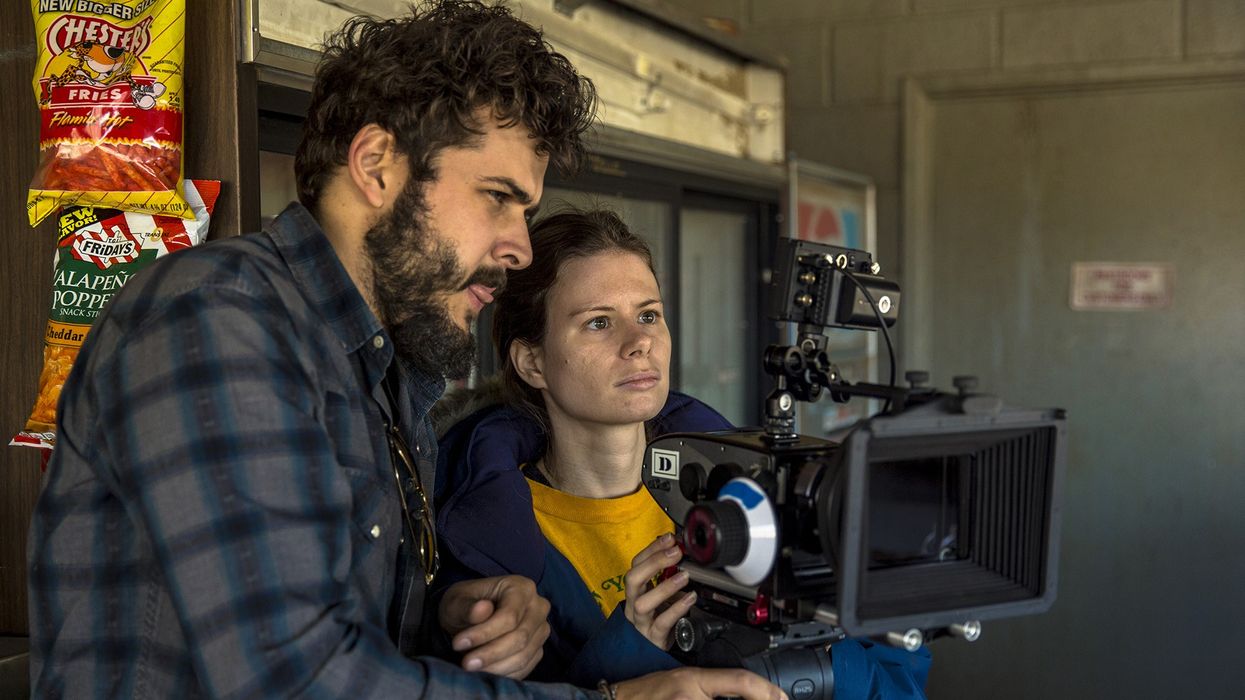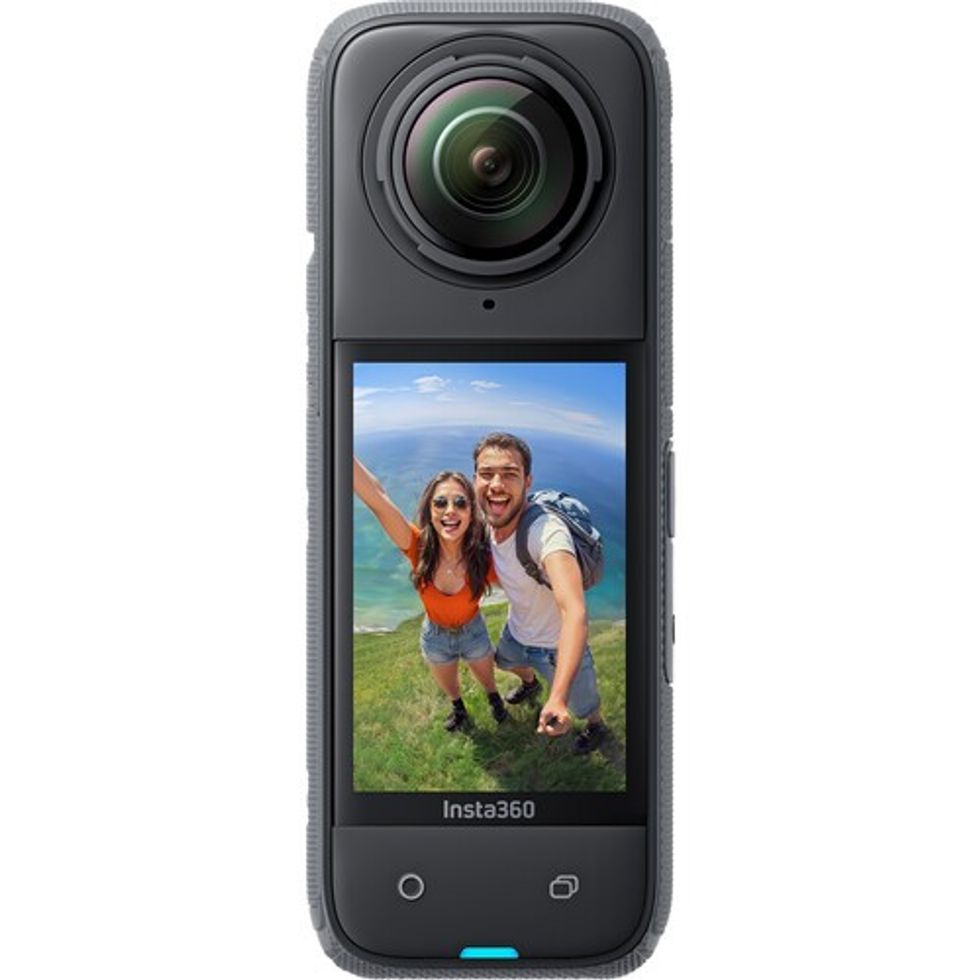How to Be the 'Cool DP' on Set
These six tips will make your crew love you, no matter what.

The DP has a lot of power. They may not be the director, but the director looks to them for answers—as well as the lighting, sound, and camera departments. There is a lot of responsibility involved on the job, and it's massively important that you don't let it stress you out.
So, if you're trying to be a successful DP, how should you act on set? Just be cool, man. Be cool.
"The DP's behavior sets the tone for everyone else on set."
At SXSW 2017, cinematographers Elle Schneider, Rita Baghdadi, and Ellie Ann Fenton spoke on a panel titled To Infinity Focus and Beyond: What DPs Bring to Set, moderated by entertainment journalist Valentina Valentini. Here are six pieces of advice that will help you get the respect you deserve on set while maintaining a "chill" work environment.

All problems on set trickle down to the DP
Things are going to get stressful on set. That's a fact. No matter which department a problem occurs on, it's always the camera department's problem, too.
"Every time there’s a problem on set, it’s always going to fall onto the shoulders of the camera and lighting team to make up the time," Ellie Ann Fenton said. "No matter where that problem happens. So if there were sound issues, location issues, art issues, it still comes down to, well, now we only have 30 minutes to get this, so we have to shoot this now."
Stay zen
When these problems come about and you're in a crunch, all of the DPs on the panel agreed it's best not to freak out. As DP, everyone is looking to you for answers, so as long as you're relaxed, your crew can relax, as well.
"You go to the fucking edge of the cliff and you get the shot."
According to Elle Schneider, you'll encounter these moments many times over on independent films that are low budget. "It definitely falls onto the DP to control the franticness of how the crew works," she said. "The DP is the one whose behavior sets the tone for everyone else on set. And I’ve found that in situations that could have become kind of panicked for whatever reason, if you’re chill and laid back, it really helps."

Take the crew out to drinks or dinner
While it's important to look cool, all of these tips are really about making sure you have a good relationship with your crew. What better way to do that than to establish your "chillness" early on and take everyone out for drinks?
"I always try to take my crew out to drinks before we shoot," Schneider said. "I worked with a director once who talked to me about how he works with his actors. More importantly than rehearsing with them, he felt that he wanted to spend time with them and become their friends. This way, he understood how each one of them communicates differently. Then, when you’re on set, instead of just hammering the script over and over again, you’re talking to someone and you know their core values."
"Relying on specific references allows you to have the conversation about lens choices, depth of field, and the realisticness or craziness of the lighting choices."
All of the panel members agreed that the DP should give special attention to building a rapport with their crew before going into production because it’ll be harder to do that on set.
Rita Baghdadi brought up one seemingly unorthodox way to ensure you choose the right members for your team. "If a director’s looking for a DP to travel with," she said, "you should take them grocery shopping and make a meal together, because that says a lot about a person. I love cooking and I relate almost every aspect of filmmaking to cooking, so you know, you need good ingredients to make a good meal."

Move on quickly from mistakes
Speaking about her own work, Baghdadi said, "Disaster happens every day in documentary, because it’s real life, and real life doesn’t wait for your day to be met. I’ve even thought the camera was rolling and it wasn’t. But you just have to say, 'Well, that was a cool moment I didn’t get,' and move on."
Just because you've lost one opportunity doesn't mean another one won't emerge. It's better to focus on finding that new great shot than worry about the one you missed. "Luckily, in documentary," Baghdadi continued, "real life moments happen all the time, and you have to know that you’re going to get another great one."
Be safe
At this point in the panel, the Valentini brought up one of the coolest subjects around: safety. "I imagine there are times you really just want to go to the edge," she asked. "How do you get the shot you want but keep yourself and the team safe?"
Schneider, who deals mostly in the realm of narrative, responded: "I think the most difficult thing with safety is when you don’t have enough hands or there is too much gear for the amount of hands on set. You can create a set situation that isn’t as well-oiled as you want it to be. I think it’s just making sure that when you're in that situation, there's not gear left unattended or in a precarious position. Make sure everything that isn’t being used is put away."
Baghdadi, who has been a documentarian from the get-go, had slightly more precarious issues to worry about. "We don’t play by rules in documentary," she said. "You go to the fucking edge of the cliff and you get the shot. You’re just in there doing it--whatever your subject is doing, you’re doing that, too. But there are all these moments where you have to navigate the question, 'What do I do?' It’s just you and your subject, and you have to look out for their safety, too. They’re giving me their life literally on camera."

Show off your influences
If you're in the beginning stages of a project, or even trying to get a job, Schneider had one helpful tip. "I keep a collection from different movies that I like and sometimes that’s really helpful when a director comes to me saying, ‘I want the film to look like this or have that vibe,'" she said. "Then, you can pull up those shots. Especially with first-time directors. Relying on specific stills allows you to have the conversation about lens choices, depth of field, and the realisticness or craziness of the lighting choices."
Come prepared
Bring everything you could possibly need with you to set. That way, when someone asks for something, you'll have it for them, or when a problem goes wrong and you're on your own, you can fix it.
"I have to do audio a lot, so I have to attach things to my camera and switch things around," Fenton explained. "I'm taking this person’s lav and giving it to this other person, and switching from the lav to the boom and back again. So, bongo ties, velcro, velcro tape—anything you can get your hands on. Bring out your old fanny pack from the '80s and stuff it full of batteries and cards, because you’re going to run out."
One more thing: "And don't forget the lens cleaner!"
For more, see our complete coverage of the 2017 SXSW Film Festival.
No Film School's coverage of the 2017 SXSW Film Festival is sponsored by Vimeo.
Featured image: Elle Schneider on set.














